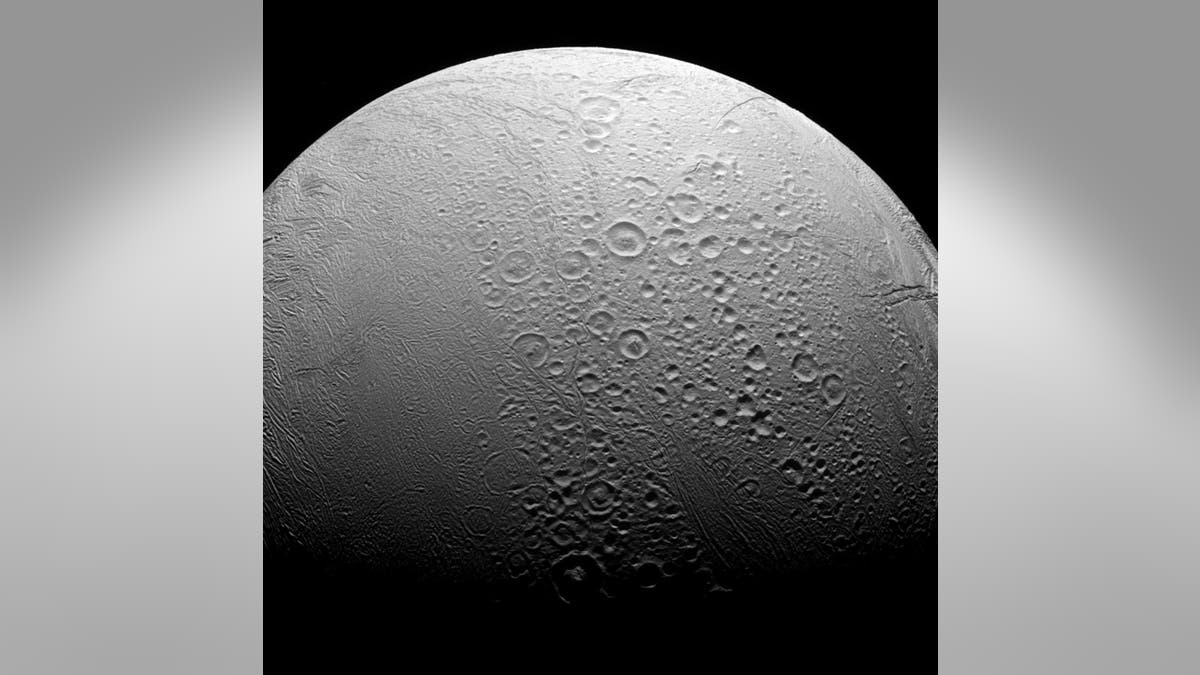
File photo: Saturn's ocean-bearing moon Enceladus taken in visible light with the Cassini spacecraft narrow-angle camera on Nov. 27, 2016. NASA/JPL-Caltech/Space Science Institute/Handout via REUTERS
Scientists have found the "building blocks" for life on Saturn's moon Enceladus, where they have discovered complex organic molecules.
The study on the matter, published this week in the peer-reviewed journal Nature, is based off data from NASA's Cassini spacecraft —before Cassini plunged into Saturn's atmosphere and ended its mission on Sept. 15, 2017.
“It is the first ever detection of complex organics coming from an extraterrestrial water-world,” said Frank Postberg, the lead author of the study, in a statement on the European Space Agency's website.
SATURN'S ICY MOON ENCELADUS, A POSSIBLE HOME FOR LIFE
"The data constrain the macromolecular structure of organics detected in the ice grains and suggest the presence of a thin organic-rich film on top of the oceanic water table, where organic nucleation cores generated by the bursting of bubbles allow the probing of Enceladus’ organic inventory in enhanced concentrations," the study reads.
Postberg and the rest of the researchers have identified large organic molecule fragments in ice grains that were spewed from geysers on Enceladus.
“We found large molecular fragments that show structures typical for very complex organic molecules,” added Nozair Khawaja, who also worked on the study, in the statement.
“These huge molecules contain a complex network often built from hundreds of atoms of carbon, hydrogen, oxygen and likely nitrogen that form ring-shaped and chain-like substructures.”
This is not the first time Cassini has detected organic molecules on Enceladus, but the newly discovered ones are significantly larger than previous discoveries, Reuters reported.
Cassini was launched in 1997 at a total cost of $3.9 billion ($2.5 billion in pre-launch costs and $1.4 billion in post-launch) and spent 13 years circling, studying and taking data of Saturn and its moons, including Titan, Saturn's largest moon.
Enceladus has been previously mentioned as a possible host for supporting life, including by NASA, last year. In April 2017, NASA announced the moon could support life thanks to the presence of hydrogen discovered.
THE ICY WORLD OF SATURN'S MOON ENCELADUS COMES INTO VIEW
Enceladus, which is known as an "ocean-world," may bear some similarities to Earth, which could pave the way for life.
In Earth’s oceans, organic substances from deeper waters can accumulate on the walls of rising air bubbles, traveling to the surface and then dispersing when the bubble bursts. Scientists think something similar could be happening on Saturn's moon.
The study's findings, while exciting, do not concretely prove that there is life on Enceladus, but it is possible, when the complex molecules are combined with liquid water and hydrothermal activity.
“In my opinion the fragments we found are of hydrothermal origin, having been processed inside the hydrothermally active core of Enceladus: in the high pressures and warm temperatures we expect there, it is possible that complex organic molecules can arise,” said Postberg.
Follow Chris Ciaccia on Twitter @Chris_Ciaccia




















